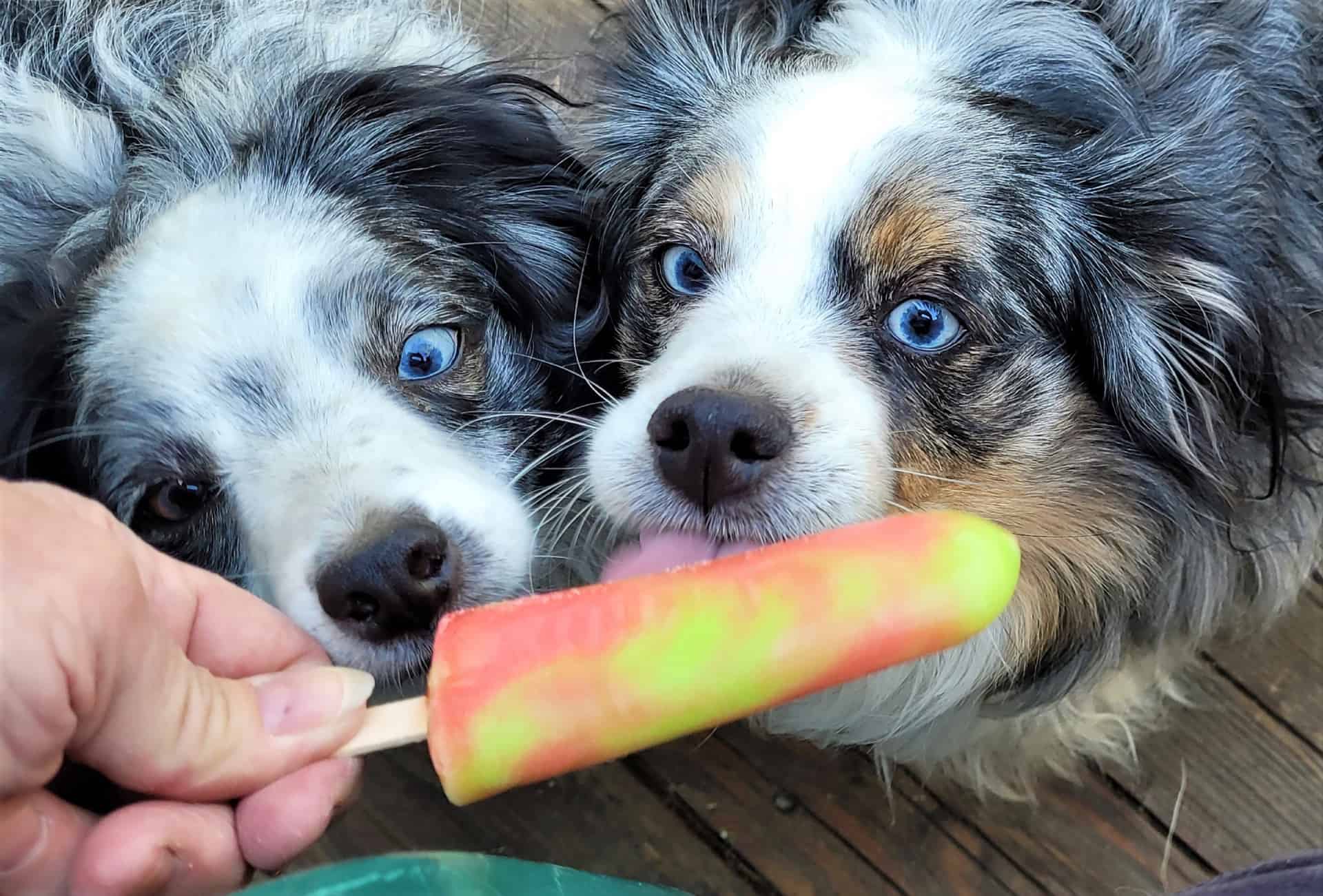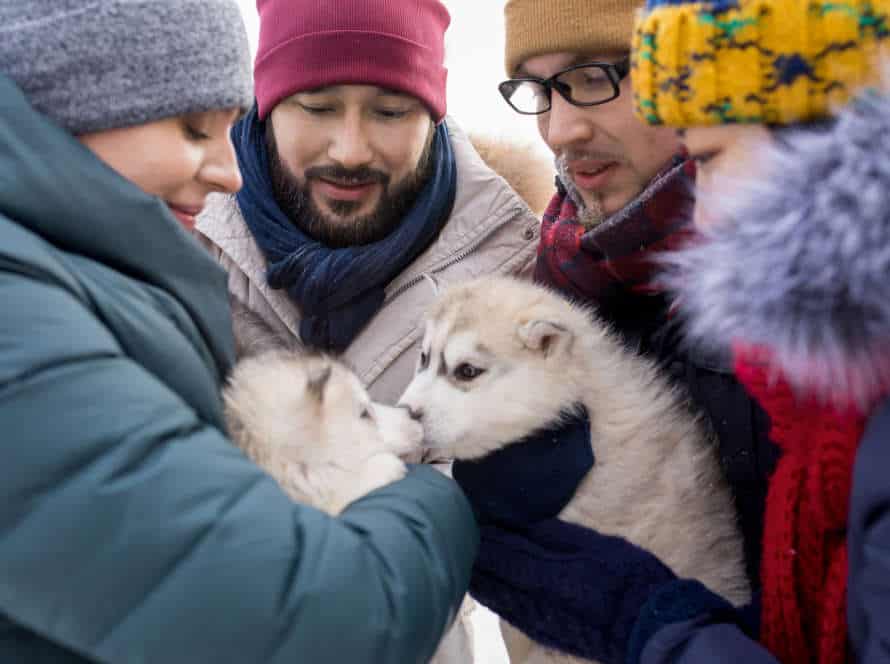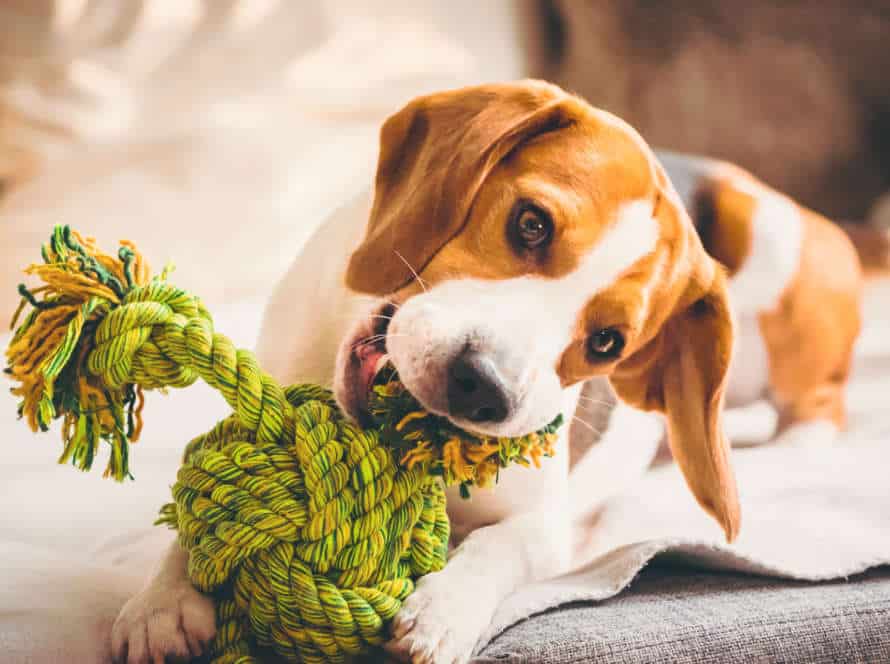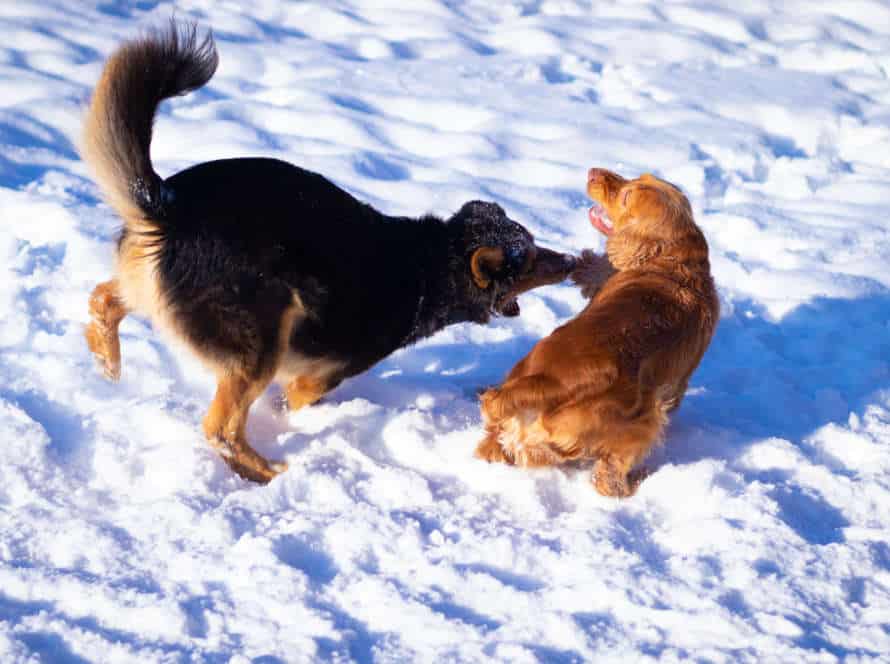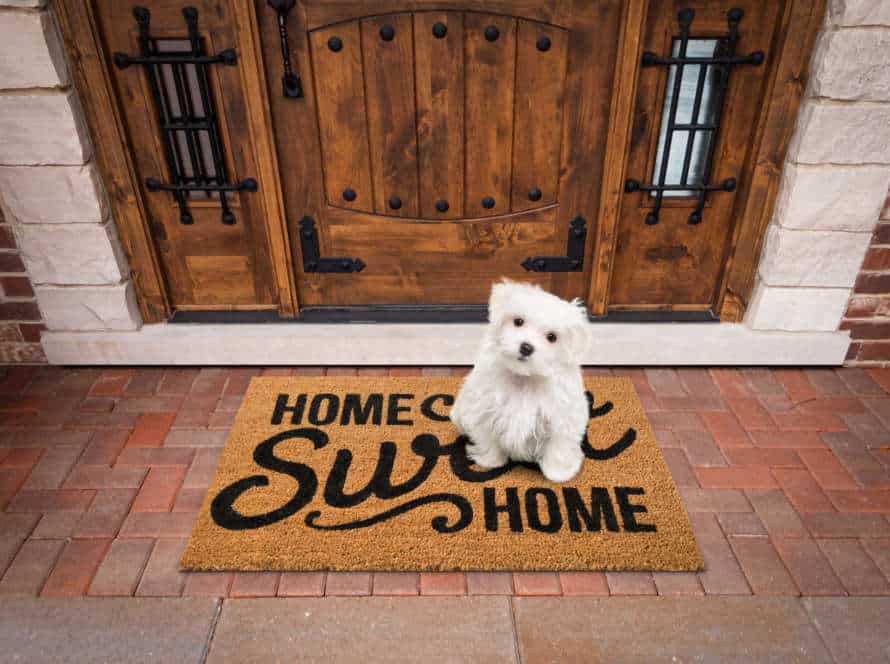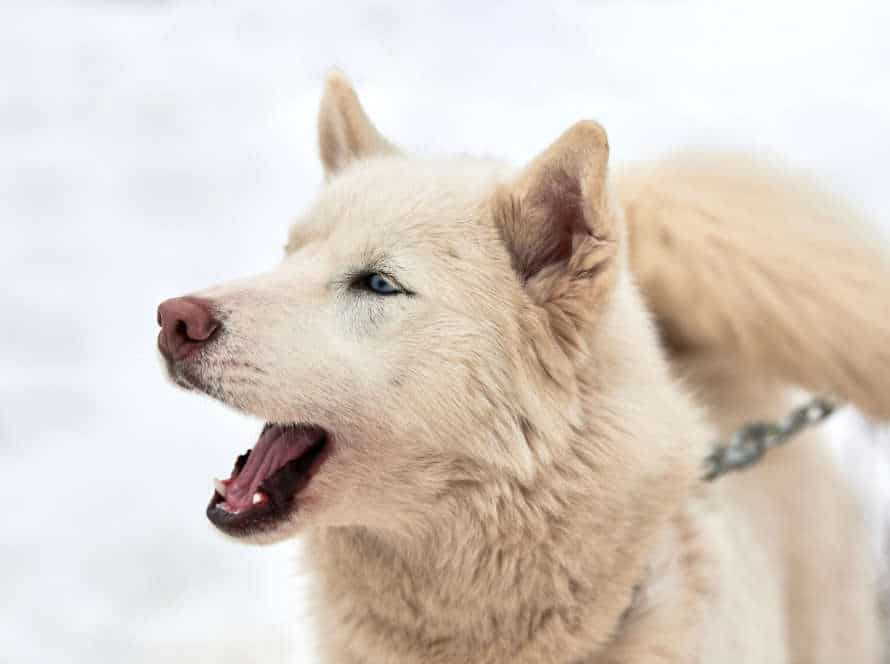Why Teaching Dogs to Share is Important
Teaching your pup to share? It’s more than a game! It’s teaching them vital social skills, plus encouraging generosity. These lessons will benefit them – they’ll be better behaved, obedient, and emotionally intelligent. So why teach ’em to share? Knowing why is the key to doing it successfully.
Benefits of Generosity training for Dogs
Generosity training for dogs comes with amazing benefits! It boosts their confidence and reduces anxiety. Here are 5 key advantages:
- Improved socialization: Dogs learn to interact better and respect boundaries.
- Reduced aggression: They’re less likely to be aggressive.
- Better obedience: They understand giving and sharing, making them easier to train.
- Increased happiness: Generosity training is fun and engaging.
- Strengthened bond: Engaging in this activity strengthens your bond with your pup!
To teach generosity, you can share toys, treats, and sleeping spots.
Positive Effects of Sharing on Dog Behavior
Sharing is not only beneficial for humans, but also in the canine world. Teaching dogs to share can have positive outcomes on their behavior and socialization.
Firstly, it reinforces social bonds between dogs by promoting cooperation. They learn to interact with others in a positive manner.
Secondly, it reduces aggressive behavior. Dogs learn patience and tolerance, and how to control their impulses and aggression.
Thirdly, it’s a great way for mental stimulation. Fun and engaging activities teach the dogs and involve their owners.
You can play with toys together, do turn-taking training games, and even share treats. Be patient, consistent, and use positive reinforcement.
Understanding Your Dog’s Behavior
Training your pooch to share is key for their sociability and general behavior. Without teaching, dogs may show hostile conduct when it comes to their toys, food, or personal space. Here are some activities to promote generosity in your dog:
- Have Fun – Encourage the idea of sharing during playtime by giving toys for you and your dog.
- Sweet Treats – Exercise sharing with treats by honoring your dog and another pup or family member at the same moment.
- Education – Use training sessions to teach your dog to hand over an object when told or to wait patiently for their turn.
Take note, teaching your pup to share is a continuous process that needs patience and steadiness. With the right training and positive reinforcement, you can nurture generosity in your furry friend and stop aggressive behavior.
Activities for Encouraging Generosity in Dogs
Teaching your pup to share can be tough. But with patience, repetition and rewards, you can teach them to be generous! Here are some activities to aid in the process. Let’s learn how to get your doggo to share!
Teaching Basic Commands and Rewards for Good Behavior
To train your pup to be kind and generous, start by teaching them fundamental commands and praising them for behaving well. Here are some activities to try:
- Trading: Give your pup a treat or toy of equal value, in exchange for what they already have.
- Taking turns: Encourage your pup to alternate with other dogs and people when playing with toys or receiving treats.
- Command training: Teach basic commands like “Sit”, “Stay”, and “Leave it” to help set boundaries and encourage self-control.
- Reward good behavior: Use positive reinforcement, like praise, treats, or playtime, to reward your pup when they share and act positively.
These activities can help build a strong bond between you and your pup, and promote cooperative and generous behavior.
Designing Engaging Games to Teach Sharing
Teaching dogs to share can be a fun and rewarding time for both pet owners and their four-legged friends. Designing interactive activities is a great way to motivate your dog to show generosity and strengthen the bond between human and pup.
Here are three activities to get you started:
- Treat Hide-and-Seek: Hide a treat and have your dog find it. When they do, reward them with a second treat for them to share with another dog or family member.
- Tug-of-War with a Twist: Play tug-of-war with your pup, but drop the toy and let them take a turn. Give them a reward when they do.
- Musical Bowls: Set up several food bowls, then play music and have your dog circle them. When the music stops, they must share the food in the bowl they’re closest to with another dog or person.
Incorporating these games into your pup’s routine will help them understand the concept of sharing and develop a generous attitude.
Utilizing Toys and Treats to Reinforce Sharing Habits
Dogs can learn to share. There are activities to help them. Here are the best:
- Fetch and Release Game: Teach your dog to drop ball/toy on command. Give reward when they do.
- Switching Treats: Offer two treats. Ask them to choose one. Reward same one they didn’t pick.
- Offering Toys: Put three favorites in front of them. Ask to pick one. Gradually introduce second dog. Encourage sharing. Reward each time they do.
These techniques can make your dog generous and kind-hearted.
Implementation and Best Practices for Sharing Training
Train your pup to share – it’s great for teaching empathy and generosity! Patience and consistency are key. Even the most independent-minded dog can be taught to share. Here’s a few tips for successful training and activities to promote generosity in dogs!
Start Early and Be Consistent
Start early and stay consistent. That’s the key to teaching your dog to share. Here’s the top ways to get your pup to be generous.
- Begin with simple commands. Teach your pup “Sit,” “Stay” and “Leave it” before introducing sharing activities. These will help you control your pet better.
- Reward-based training. Give treats and compliments to your pup when he shares his things or space.
- Take turns. Use a timer or whistle to let your pup know when it’s his turn to play with a toy. Increase the duration as your pup becomes more comfy with sharing.
- Be consistent. Use the same commands and treat pup’s behavior the same during all training sessions. This consistency and routine will help pup understand what’s expected.
Patience and persistence will get pup to learn sharing. Socialization skills and a better bond between you and pup will follow.
Use Positive Reinforcement Techniques
Positive reinforcement is a good way to teach dogs to share. Here are the best practices:
- Reward good behavior. Praise or give food for sharing toys/treats.
- Use treats to motivate. High-value treats at first then lower-value.
- Be consistent. Same techniques each time.
- Be patient. Start with short sessions & increase as dog gets comfortable.
Remember, teaching to share needs consistency, patience & positive reinforcement.
Recognize Progress and Celebrate Success
Recognizing progress and celebrating success are important when teaching your dog to share. Here are some tips to make the process easier:
- Start with simple exercises that your dog can succeed at like giving a low-value treat or toy and using a command to release it.
- Use positive reinforcement like praise and treats to encourage generous behavior. Avoid punishment or aggression.
- Gradually increase difficulty by offering higher value items or practicing sharing with other dogs.
- Reward progress and successes with extra praise and rewards or a fun activity.
With patience and consistency, your dog can learn to share and enjoy the process!
Common Pitfalls and How to Avoid Them
Teaching dogs generosity? Time and patience is the key! But, know what to avoid beforehand. Let’s have a look!
Pitfalls? Make sure to avoid them. Don’t waste your efforts.
Overcoming Resistance to Sharing
To help dogs get along and live peacefully, overcoming resistance to sharing is a must. Pet owners often face difficulties when training their dogs to share. Here are some common problems, and how to overcome them:
- Don’t rush! Start small with low-value items and move up to more precious possessions slowly. Also, introduce your pup to social environments so they become accustomed to giving things up.
- Shouting or scolding your dog won’t help. Use positive reinforcement instead to reward generous behaviour.
- Establish boundaries. Teach your dog the “leave it” command to make sure they release objects when asked.
- Keep training sessions simple to avoid frustration.
- Remember each dog learns at their own pace. Avoid comparing one to another.
Pro-Tip: Patience, persistence, and positive reinforcement are key. Be consistent, reward good behaviour, and never punish or shame your dog for not succeeding.
Identifying and Addressing Aggressive Behavior Patterns
Avoiding mistakes when addressing aggressive behavior in dogs is essential for their wellbeing and those around them.
Don’t use physical punishment or harsh training methods – this can even worsen the aggression and ruin your bond.
Positive reinforcement is much better – reward good behavior.
If you see signs of aggression like growling or snapping, don’t ignore it – act fast, or it could become a habit.
To promote generosity, do activities with other dogs and people. Dog parks and socialization classes are great for this.
With positive reinforcement, you can help your pup become a well-behaved and generous companion.
Tips for Encouraging Play Interaction and Sharing
Sharing and interaction are essential for a well-behaved pet. It can be tricky though! Here are some top tips for teaching your pup to share:
- Provide plenty of toys and treats to reduce the competition for resources.
- Set boundaries and rules for playtime and reward good behaviour with treats or praise.
- Keep an eye on playtime to avoid fights or aggression, intervening if needed.
- Use positive reinforcement techniques such as clicker training or treats to help your pup learn to share.
- Be patient and consistent with your training, never punishing your pup for mistakes.
It can take time, patience and diligence to teach your pup how to share. With these tips, they’ll soon be a socialised and happy pet!
The Role of Owner in Training Dogs to Share
Train your canine pal to share! It’s a wonderful way to teach them values like generosity and empathy. As an owner, it’s key to take part in the process. Guide and support your pup, so they can learn to share. So, what can you do to motivate your dog to be generous?
Understanding Your Role as a Trainer
As a dog trainer, you must understand your role in the training process. You must provide clear instructions and feedback, be consistent in your methods, and observe the dog’s responses and body language.
As an owner, you must understand that training your pup is an ongoing process. Patience, consistency, and positive reinforcement are key. Give your pet interactive toys and games to encourage sharing and collaboration. Set boundaries and reinforce positive behaviors to promote cooperative play.
Your role as a trainer is not just about teaching tricks. It is about building a strong and trusting bond with your furry companion that will last forever.
Creating a Positive Learning Environment
Creating a wholesome atmosphere for learning is a must to teach dogs to share and foster generosity. As the owner, it’s essential to make a safe and pleasant space for your pup to learn and exercise sharing.
Here are some tips to make a positive learning environment for your dog:
- Begin with fundamental obedience training to build trust and communication.
- Use positive reinforcement techniques, like treats and compliments, to reward good behavior.
- Keep training brief and regular to dodge exhaustion and frustration.
- Ensure lots of toys, treats, and attention to prevent resource guarding and create a feeling of plenty.
- Be persistent and consistent with your training. Don’t forget to commemorate your pup’s progress as you go.
Practicing Patience and Persistence
Patience and persistence are essential when teaching dogs to share and be generous. Here’s how you can help:
- Start small. Take turns playing with a toy or share treats.
- Increase difficulty as they get more comfortable.
- Reward good behaviour. Praise, pet, or treat them every time.
- Be persistent. Training takes time and effort. Don’t give up.
- Repeat and stay consistent.
Pro-tip: Dogs learn through repetition and consistency. Keep training regularly to encourage sharing and generosity.
Frequently Asked Questions
Q: Why is teaching dogs to share important?
A: Teaching dogs to share is important because it promotes good behavior and helps prevent aggression. Sharing also improves social interaction with other dogs and humans.
Q: What are some activities that encourage generosity in dogs?
A: Some activities that encourage generosity in dogs include playing tug-of-war with a toy, taking turns chasing a ball, and allow the dog to give treats to other dogs or humans.
Q: Can all dogs learn to share?
A: Yes, all dogs can learn to share with proper training and reinforcement. However, some dogs may require more time and patience than others.
Q: How should I reward my dog for sharing?
A: Reward your dog with praise, treats, and positive reinforcement when they share their toys or space with other dogs or humans. Make sure to use a positive tone of voice and show your appreciation for their good behavior.
Q: Can teaching dogs to share benefit their behavior in other areas?
A: Yes, teaching dogs to share can improve their behavior and obedience overall. Sharing can help build trust, reduce anxiety, and improve their social skills.
Q: How long does it take to teach a dog to share?
A: The time it takes to teach a dog to share will vary depending on the dog and their level of training. However, with consistent training and patience, most dogs can learn to share within a few weeks to a few months.

